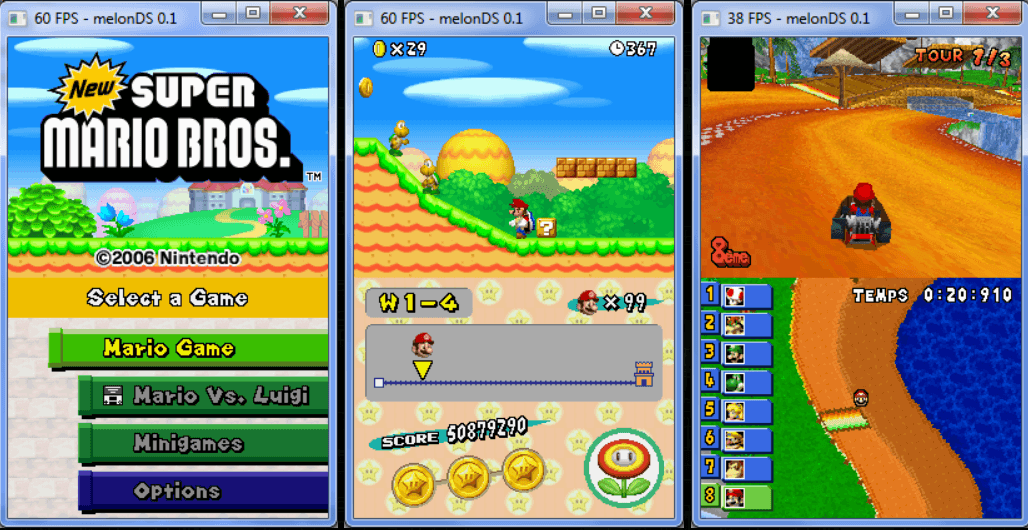
:max_bytes(150000):strip_icc()/003_the-xx-best-ds-emulators-for-android-of-2019-4769178-9fb7e308895541549295c1ebc2a3701b.jpg)
"USG": attached controller is DS lite, not old DS "phat". They have a sticker on the bottom with the purchased options. Wii and WiiU devkits also have wired coaxial cables between the devkit and the remotes, for example.ĭevs could buy these with different optional features, at different prices. I guess it's to prevent interference/saturation if you have 100 developers in a single office with 100 of these, all using wifi at the same time to test their games. The "wired wireless" is interesting, and is a recurring theme in Nintendo devkits. IS-NITRO-EMULATORs that have the Wireless option can use real wifi, and toggle between them with a DIP switch.

You can connect two IS-NITRO-EMULATORs with an ethernet cable to simulate wifi connectivity between them. They only work if the IS-NITRO-EMULATOR has the "Video" option. 2 video outs (same video connector as GameCube). Power input (12V DC, it uses the same power connector and adapter as the GameCube) A cable comes out of it to a regular-looking DS, except its SLOT-1 and SLOT-2 are unusable (SLOT1 has the cable, SLOT2 is glued shut). Front panel has 3 LEDs: "SYSTEM1", "SYSTEM2" and "POWER". This is probably because the entire gamecard SPI bus is passed through, probably so devs can use real cards that have extra fancy hardware in the SPI bus like some games do. Interestingly the backup memory is passed through to the real card plugged in to the SLOT-1.
#Nintendo ds roms emulators Pc
The name "EMULATOR" comes from the fact it emulates the DS game card: it has extra hardware that makes the NDS CPU believe it's reading stuff from a game card, but it's in fact reading from some special RAM inside it that can be written to using its PC software. You can boot a ROM in it and then debug it, put breakpoints in the ASM code, view and edit the RAM, etc. Devs used this to test and debug their games. This is the "main" Nintendo DS development kit. Having the right sub card is important if you want to run a commercial ROM that needs a particular backup memory type and size. The main cards and the sub cards were sold to devs separately so they could choose the backup memory type and swap it themselves. They're swappable because there are several types and sizes of backup memory (EEPROM and Flash), and the game developers needed to test with cards with the right type of backup memory. If you open the top half, they have a "sub-card" inside, which is the backup memory (for saved game data). These act like regular Nintendo DS game cards, except they can have ROMs written and rewritten to them, using the IS-NITRO-EMULATOR or the IS-NITRO-WRITER. It's really cool because they have very interesting ROM hacking applicationsĮDIT: I'm selling one IS-NITRO-EMULATOR! 230 EUR + shipping, PM me for details. I thought I should document publicly what they do, instead of just shelving them away as collectibles like most people seem to do. I've been playing with them, trying to get them working and do useful stuff. They had tons of cool rare development hardware, among it Nintendo DS development ones! Of course I had to get some I recently came across an auction from a bankrupt Spanish video game development company.


 0 kommentar(er)
0 kommentar(er)
